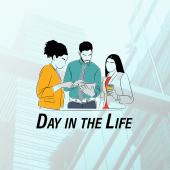In business and in life, we are often confronted with challenges that we need to resolve. As corporate counsel, our jobs are to use our legal knowledge to solve business problems. And we tend to be good at it. But there are times when the answers are simply not forthcoming.
Our inclination is to put our full effort and attention on the problem. When that works, great. But what happens when we, try as we may, get nowhere? There are several strategies that can help us.
The first is likely similar to what we’ve been doing: totally focus on the problem. However, this approach needs a slight tweak. We need to approach the problem and our potential solutions without judgment. The reason we need to be judgment free is that judgment stifles creativity. The actual goal in this situation is not directly related to coming up with the answer, or even an answer, but rather how we go about finding the answer.
By coming at the problem from different angles and with creative thought, we are conveying the significance of solving the problem. Because it is important, our minds will do what they do best and that is to help us, to protect us.
The key, however, is to not inject negative thoughts into the process. Do not dismiss any potential answers that appear. Do not castigate yourself for not immediately arriving at the solution. As long as we are in the flow, our minds will feel free to continue producing potential answers.
However, once we reach the end of our brainstorming, if we still do not have the solution we seek, it is time to go in a different direction.
One of the more difficult ways to solve a problem is to step away from it. The reason this is difficult is because we tend to think that focusing on the problem will solve it. And while that is often the case, sometimes the opposite is true.
We can get so bogged down in the issue we are trying to resolve that we get tunnel vision and become unable to look at the problem in a different way or be open to new ways of solving it. We are creatures of habit.
Our brains function in ways that are comfortable for us and usually look for the paths of least resistance. That in and of itself is not a bad thing, but when we are in search of solutions, our way may not be the best way. And it certainly is not the only way.
When we step away from the problem we give ourselves alternatives to move forward. This is called the incubation effect.
One option is to engage with other people. The advantage of this is that other people already come with different ways of thinking and approaching a problem. They also bring fresh energy and are not frustrated by sunk costs. While we may eventually end up with the same answer, the path by which we reach that solution is not always exactly the same.
Another approach is to simply change what we are thinking about and focus on something else for a while. This gives our subconscious a chance to find a solution without us trying to force one.
You have no doubt had a memory you tried to summon. You were intensely focused and trying extremely hard to remember something. The harder you tried, the more elusive your memory seemed to be. You may have even exclaimed, “It’s right on the tip of my tongue!” But you gave up and started doing other things.
Minutes, hours, or even days later, while you were in the middle of something else, something totally unrelated, the answer sprang from your memory. It is the mechanism that helps problem-solving. Sometimes the harder we try, the more difficulty we have in reaching a solution. So, we put it on the back burner, begin to work on something totally different, and the answer suddenly appears. When I’m frustrated with a problem, I will pick up a crossword puzzle and let my subconscious take over the problem-solving. Sometimes before I finish the puzzle, a new way forward has emerged, without any “active” thinking.
It doesn’t matter if we solve our problems by concentrating intently, asking for assistance, or walking away and letting the answer find us. Regardless of which approach we take, or if we use all three, the goal is to recognize when what we are doing isn’t working and to try something different.




